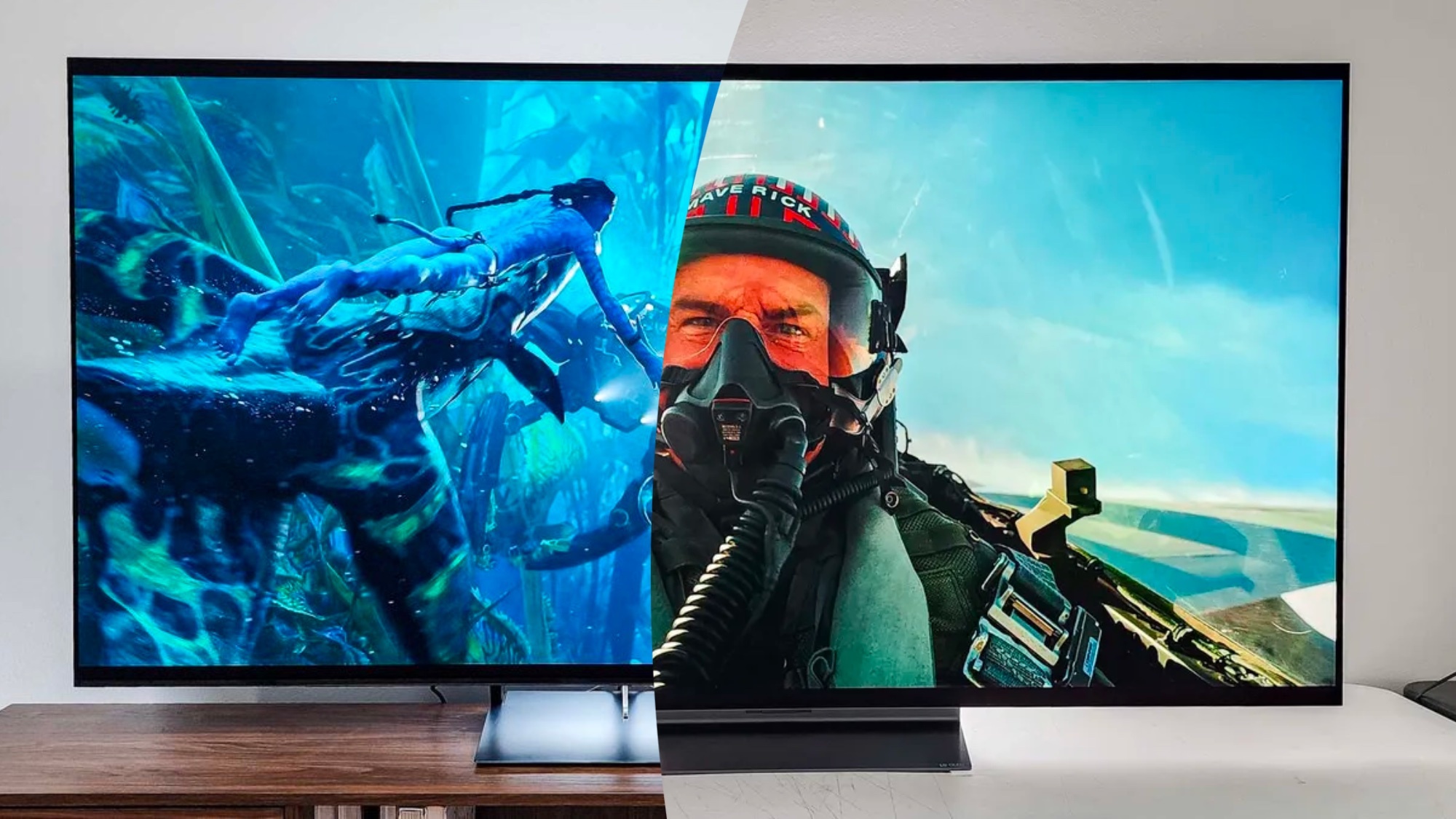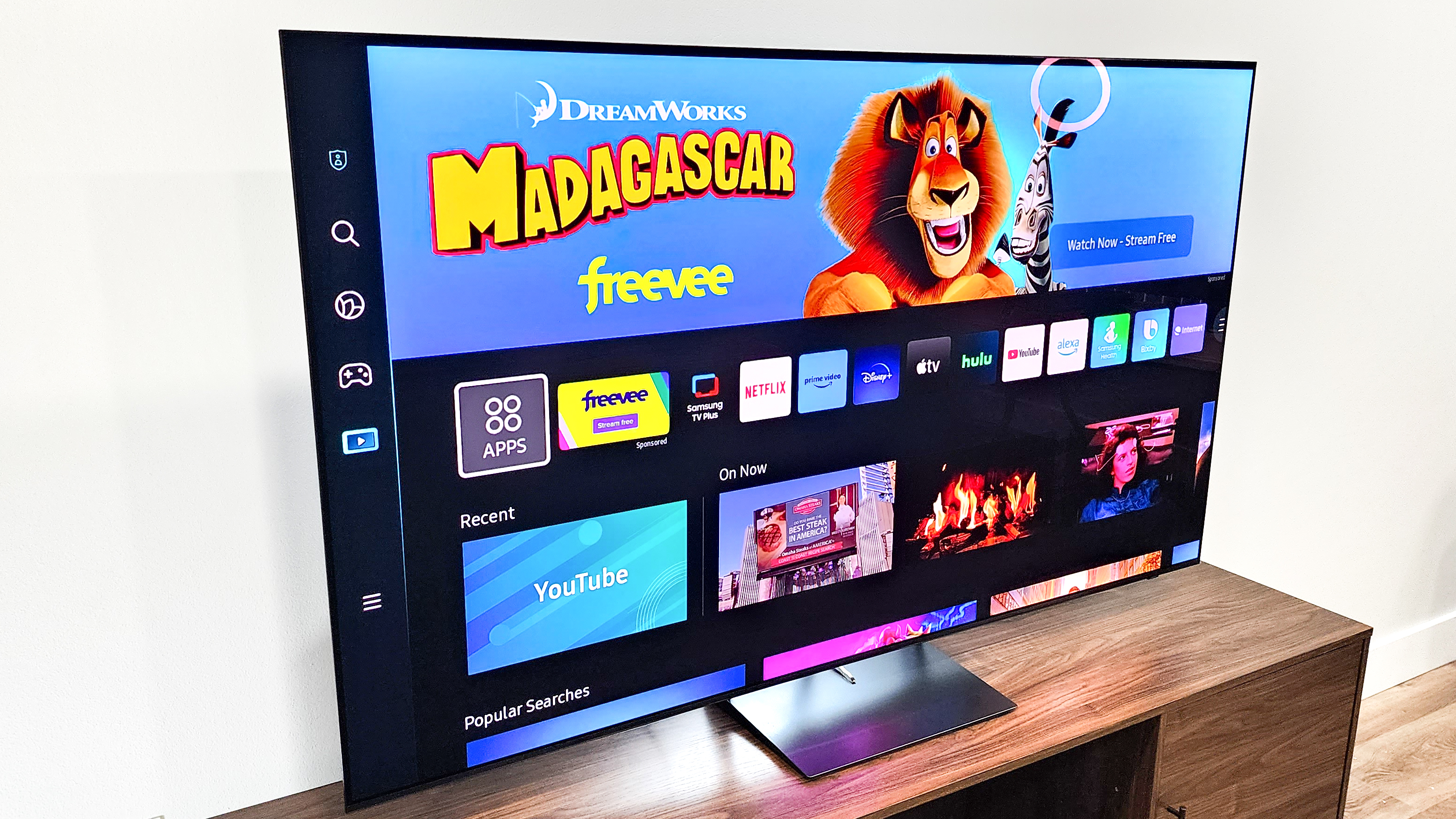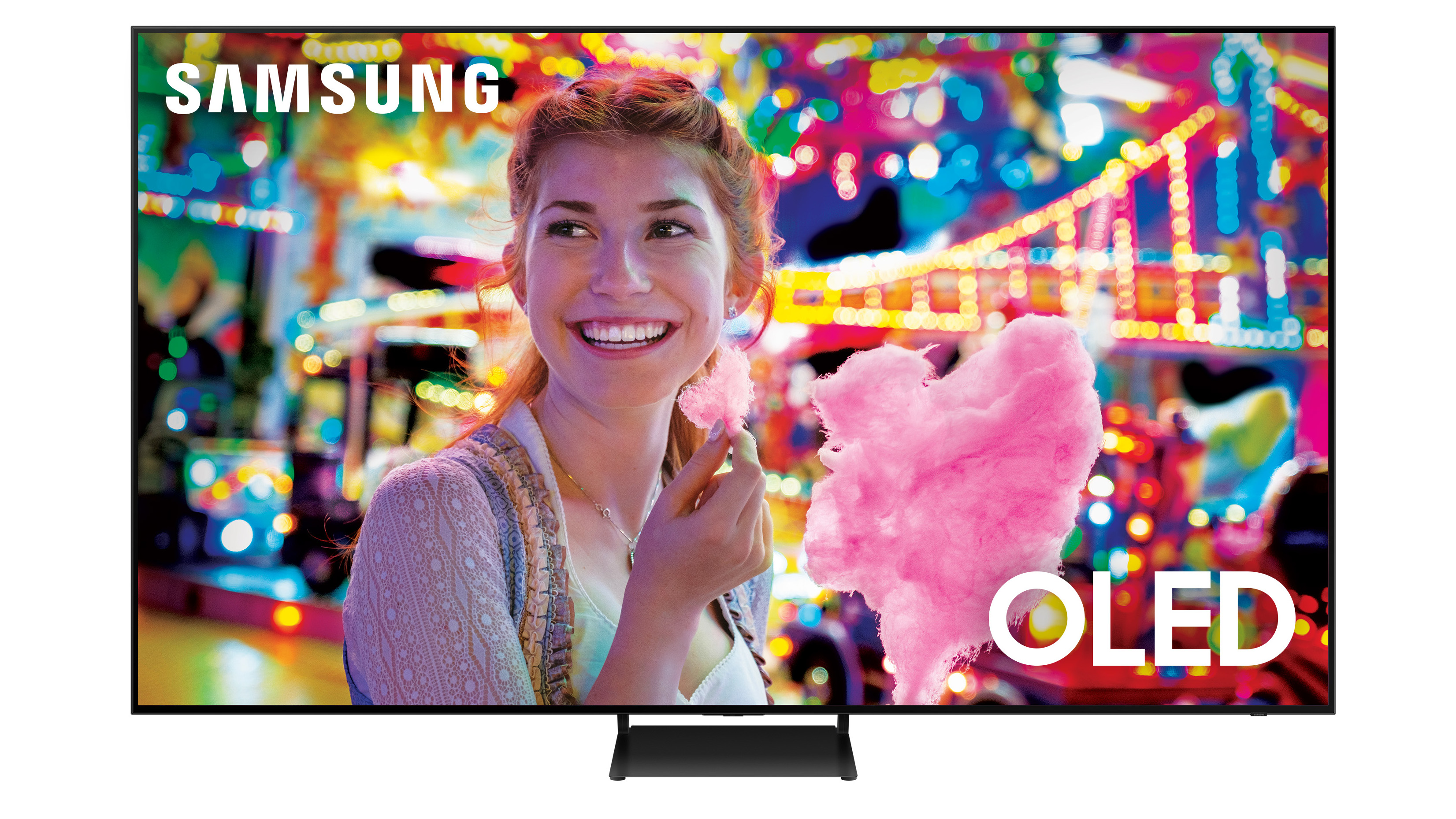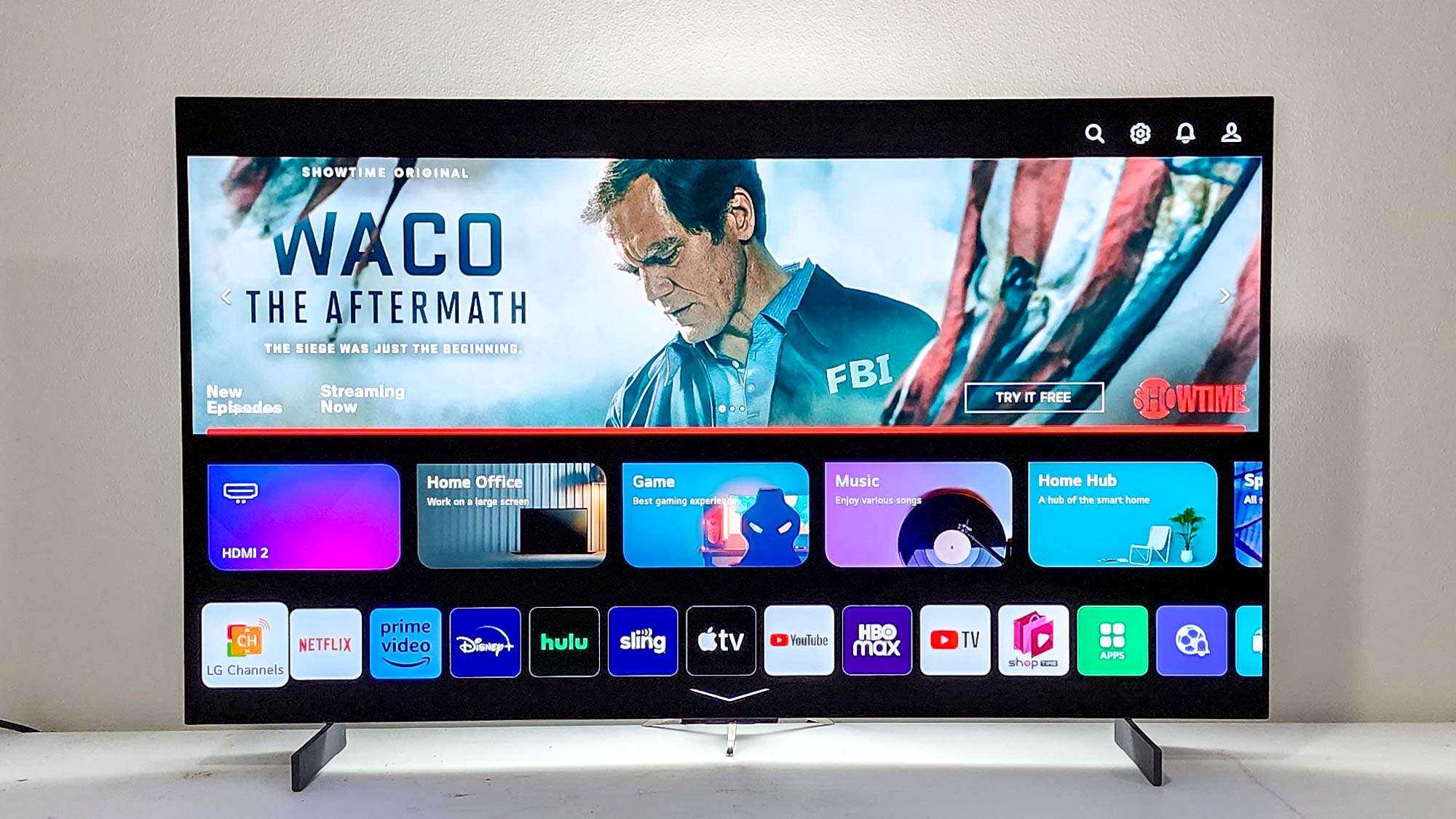
Two of the biggest OLED TVs to launch in 2023 are the LG C3 OLED and Samsung S90C OLED, a slightly lower-cost version of the award-winning Samsung S95C OLED.
But which of the two is the better buy? Having put both of them through our rigorous testing process, it's clear that the Samsung S90C outshines the LG C3 in two very important metrics while keeping it a dead heat in terms of price.
In short, if you want better color vibrancy and better brightness, the Samsung S90C is the OLED to go for. That said, if you care about an easy-to-use smart platform, LG's WebOS works wonders.
Here's how two of the best OLED TVs stack up against one another.
Samsung S90C vs LG C3 OLED: Test results
| Row 0 - Cell 0 | Samsung S90C | LG OLED evo C3 |
| Price (inches, $) | 55-inch ($1,599), 65-inch ($1,799) | 55-inch ($1,499), 65-inch ($1,899) |
| SDR Brightness (10%, in nits) | 257 | 237 |
| Delta-E (lower is better) | 1.3184 | 1.3908 |
| Rec. 709 Gamut Coverage | 98.6903 | 99.0904 |
| HDR Brightness (10%, in nits) | 1073 | 820 |
| UHDA-P3 Gamut Coverage | 108.03 | 98.98 |
| Rec. 2020 Gamut Coverage | 78.23 | 73.77 |
| Input Lag (ms) | 9.2 | 12.9/9.1 |
Samsung's S90C wins on brightness

In both SDR and HDR brightness, the Samsung S90C is the winner. In a 10% window, the Samsung S90C routinely hits above 1,000 nits in brightness while the C3 floats between 700 and 800 nits. That's not going to be a night and day difference to the human eye, but anyone looking at the two screens could tell them apart.
So what's happening here? If you've been doing your homework on TVs, you'll know that the LG C3 OLED still uses the Gen. 2 Evo panels from LG Display, which is why the series didn't see significant gains in brightness year-over-year. Samsung's S90C, on the other hand, is using the first generation of QD-OLED displays from Samsung Display — hence why it has the better brightness.
The only LG OLED TV that can match Samsung's QD-OLED panel tech would be the new LG G3 OLED that uses LG Display's 3rd Gen META panel that uses MLA technology. Micro Lens Array, referred in shorthand as MLA, amplifies brightness through the use of tens of thousands of small lenses. It reduces the amount of light that's lost in between the organic light emitting diode and the the front of the screen, and even benefits color saturation as well.
Get instant access to breaking news, the hottest reviews, great deals and helpful tips.
Speaking of color saturation...
The S90C has better color saturation (in most cases)

So it comes with a small caveat, but the Samsung S90C also offers better color saturation than the LG C3 OLED — especially if you mostly plan on watching HDR content.
You can measure color saturation in a few different ways, but the easiest way to compare apples-to-apples is by using an industry color standard like Rec.709 or BT2020. The former was established all the way back in 1993 and was the goal for all HD TVs in the late '90s and early 2000s. These days, most TVs cover 90% or more of that color spectrum, which is why we use wider spectrums like UHDA-P3 or BT2020.
When you look at the Rec709 comparison, both TVs cover around the same amount of space (99%). But switch to a larger standard, and it's clear that the Samsung S90C has the better color saturation. Because HDR content is mastered with BT2020 in mind, you'll actually be able to see the difference in colors when watching two HDR movies side-by-side on these two TVs.
The LG C3 OLED is no slouch here and it beats out dozens of other models, but if you want the best color on a TV in 2023, the S90C is once again the better pick.
But the C3 OLED has the better smart platform

So where does the S90C fall short? It's not something that we can provide hard data on, but having spent extensive time with both, we've typically found that LG's WebOS smart platform is easier to use and more functional than Samsung's Tizen platform.
The crux of our problem with Tizen is that important system settings are buried and harder to reach than they are on WebOS. If you want to tweak the picture mode, for example, Tizen requires you to exit the content you're watching to go to the main home screen and then into the picture settings. On WebOS, you can tune the picture settings without turning off the content you're watching.
Another thing that WebOS does a bit better is that it allows you to jump from one streaming service to another fairly quickly. It just takes two button presses. On Tizen, there's a lot more clicking to do to get where you want to go.
In all three cases — brightness, color saturation and smart platform — it's a tight race, with one of the two TVs just eking out ahead of the other. It's not a cop out to say that both OLED TVs are great, and you'd probably be happy with either. That said, from a pure numbers standpoint, we're giving the nod to the S90C OLED.
More from Tom's Guide
- This is the one thing to know before you buy a TV
- TCL’s brand-new 50-inch 4K TV is here — and it’s ridiculously cheap
- Google TV just got a major upgrade for gamers and it’s coming to Chromecast

Nick Pino heads up the TV and AV verticals at Tom's Guide and covers everything from OLED TVs to the latest wireless headphones. He was formerly the Senior Editor, TV and AV at TechRadar (Tom's Guide's sister site) and has previously written for GamesRadar, Official Xbox Magazine, PC Gamer and other outlets over the last decade. Not sure which TV you should buy? Drop him an email or tweet him on Twitter and he can help you out.
